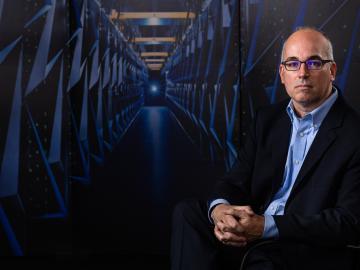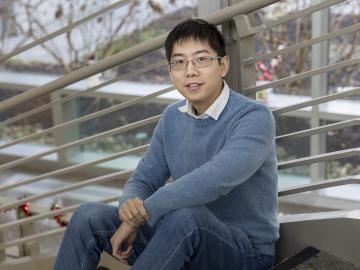Filter News
Area of Research
News Type
News Topics
- 3-D Printing/Advanced Manufacturing (8)
- Advanced Reactors (2)
- Artificial Intelligence (2)
- Big Data (2)
- Bioenergy (1)
- Biology (2)
- Biomedical (4)
- Chemical Sciences (4)
- Climate Change (3)
- Computer Science (6)
- Coronavirus (5)
- Cybersecurity (1)
- Energy Storage (5)
- Environment (9)
- Fusion (3)
- Grid (1)
- High-Performance Computing (1)
- Isotopes (3)
- Machine Learning (1)
- Materials (2)
- Materials Science (7)
- Mathematics (1)
- Microscopy (1)
- Molten Salt (1)
- Nanotechnology (7)
- National Security (2)
- Neutron Science (7)
- Nuclear Energy (7)
- Physics (9)
- Polymers (1)
- Quantum Science (2)
- Security (1)
- Summit (2)
- Sustainable Energy (4)
- Transportation (2)
Media Contacts

After several years in the private sector exploring the unknown origins of neurodegenerative brain disorders such as Alzheimer’s, Chris Ellis thinks one of the keys to solving the mystery is at Oak Ridge National Laboratory: the world’s most powerful supercomputer.

Rigoberto “Gobet” Advincula has been named Governor’s Chair of Advanced and Nanostructured Materials at Oak Ridge National Laboratory and the University of Tennessee.

Liam Collins was drawn to study physics to understand “hidden things” and honed his expertise in microscopy so that he could bring them to light.

A typhoon strikes an island in the Pacific Ocean, downing power lines and cell towers. An earthquake hits a remote mountainous region, destroying structures and leaving no communication infrastructure behind.

Eugene P. Wigner Fellow Victor Fung’s story is proof that a series of positive experiences around science and happy accidents can lead to a rewarding research career. He joined ORNL in 2019.




